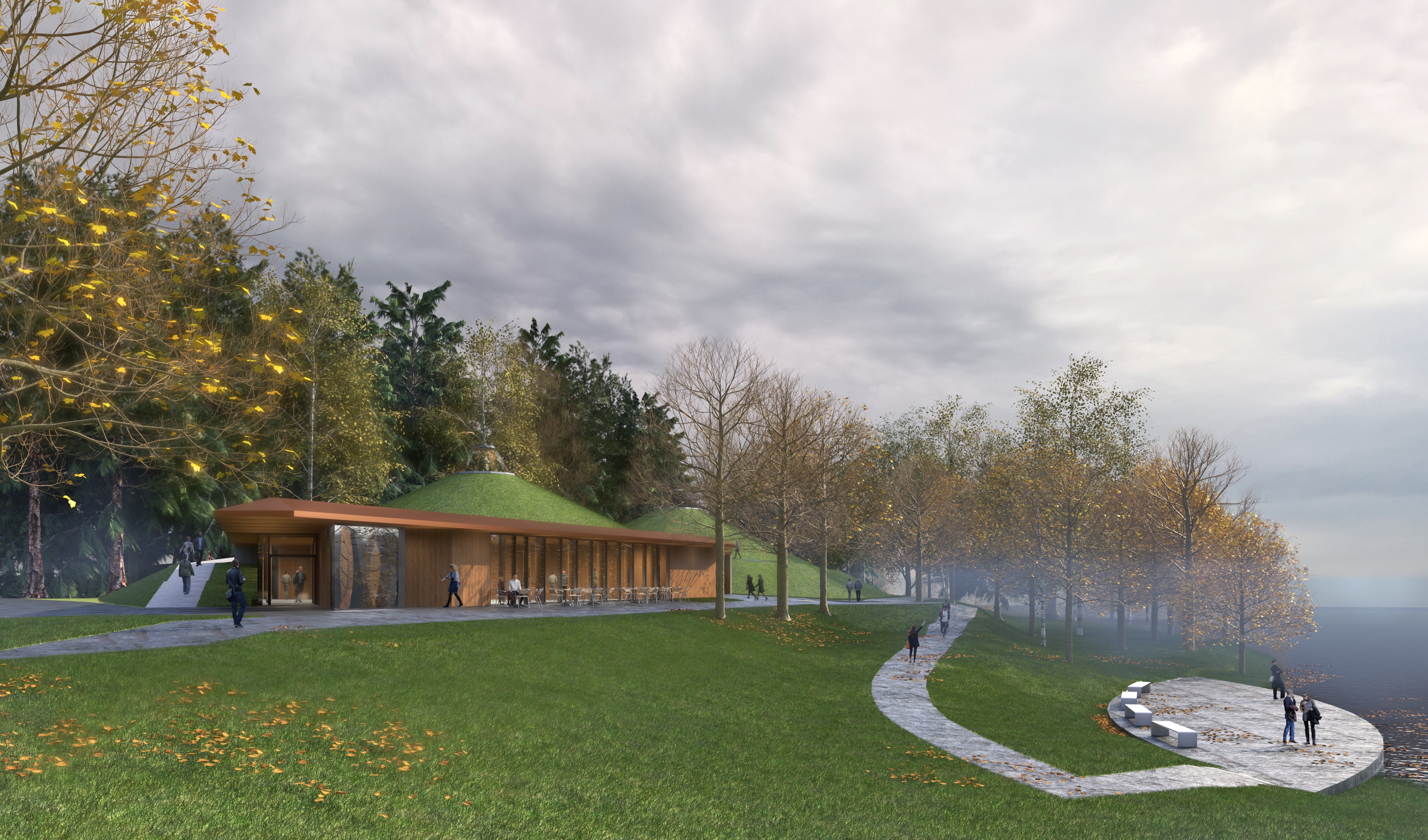LHTAKO DENE CULTURAL CENTRE




Location: Quesnel, BC
Concept Design: February 2019
Building Area: 1,715sm (18,480sft)
The Lhtako Dene Cultural Centre is a partnership between the City of Quesnel and the Lhtako Dene Nation to acknowledge reconciliation between the Lhtako People and the City of Quesnel. This project stems from discussions during the development of a memorandum of understanding between the two communities. For Lhtako Dene, the site of a large settlement and their history on the banks of the Fraser and Quesnel rivers will be recognized. The site is of national historic significance as the point of first contact between Alexander Mackenzie and Dakelh people, who led the explorer to the coast via the Grease Trail. Developing the facility proposed will give the Lhtako People the opportunity to repatriate artifacts of importance to share their history with their community, the North Cariboo, and with visitors from around the world. Young people will benefit from job training opportunities that may be offered in the café, gift shop or in operations of the centre. For the City of Quesnel, the project provides a community theatre facility which has been a long time ask of the arts and culture community. The facility draws attention to the City's riverfront and will be an architectural highlight along our Riverfront Trail System. Facilities like this help in the attraction and retention of residents and visitors. For all, there will be opportunities to benefit from guest lecturers, musical performances, art displays, and theatrical productions that will take place in the new centre.
The main objectives of the centre include the following:
· Community gathering place
· Repatriation of Lhtako Dene artifacts
· Celebration of arts and culture
· Educational opportunities
· A place for performing arts
· Resident and visitor attraction
The facility will be ultimately owned and managed by the Lhtako Dene Nation. Lhtako Dene may enter into a management agreement with the City of Quesnel for management of the facility in early years of operations. Ultimately, the goal is for Lhtako Dene Nation to take over operations of the facility, over a possible 5 year phased approach. There may be opportunities for employability training, particularly in the hospitality sector, for Lhtako Dene youth and opportunities for the centre to act as an incubator for indigenous entrepreneurs.
The site design concept for the Lhtako Dene Cultural Centre derives its cultural precedent from the Pithouse Villages used by the Dene in the Plateau region along the Fraser River. Archeologists estimate that mobile hunting people transitioned to semi-permanent villages using Pithouse structures around 2,500 B.C. The Dene in this region lived along major water ways including the Fraser River and harvesting of salmon was central to their culture. Pithouse structures are developed in various forms and the most common structure had 4 supporting wood columns at the centre supporting 12 circular wood beams.
The Cultural Centre is conceived as a Pithouse village located where the Quesnel River feeds into the Fraser River. Two large Pithouses emerge out of the existing Ceal Tingley Memorial Park green field forming a village housing a performance gathering place and a Cultural exhibit centre with secondary programmed spaces around them.
The building merges with the landscape growing out of the site. To preserve the nature and continuity of the park pedestrians can walk up and over the cultural centre in a continuous paved trail. The roof of the building is planted with indigenous grasses and a central ethno-botony garden is located at the centre with an observation deck overlooking the river.
Client
The Lhtako Dene Nation and the City of Quesnel
Design Team
Alfred Waugh (Lead Architect), Monika Kolon, Henry Dyck




